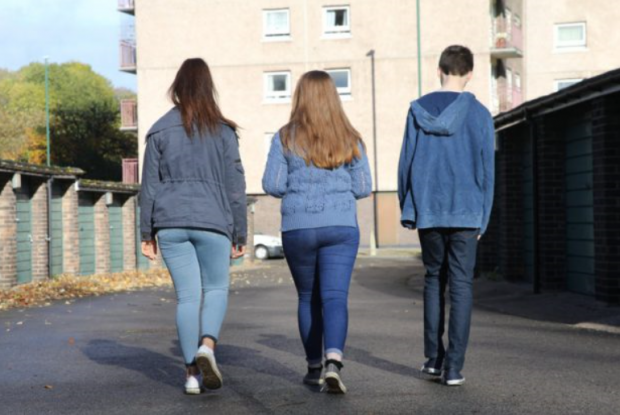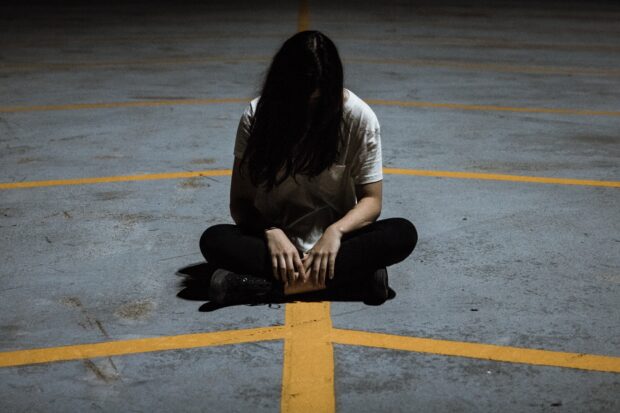
Sean Harford, National Director for Education, and Yvette Stanley, National Director for Social Care, discuss peer-on-peer abuse: what it is, what schools should be doing when it happens and how we’ve trained our inspectors to recognise it.
Peer-on-peer abuse includes, but is not limited to:
- physical and sexual abuse
- sexual harassment and violence
- emotional harm
- on and offline bullying
- teenage relationship abuse
It can even include grooming children for sexual and criminal exploitation.
It’s hard to say just how widespread a problem it is. But we know that there’s extensive evidence of peer-on-peer abuse in the context of both sexual and criminal exploitation. In autumn last year, the NSPCC announced a 29% increase in children seeking help from Childline due to peer-on-peer sexual abuse. The issue has, understandably, been scrutinised in the media recently.
What should schools and other providers be doing about it?
Unfortunately, peer-on-peer abuse can and does happen in a whole range of settings that children attend. However, it often goes unseen. It might take place online, for example, or away from the school or setting. Therefore, training for professionals to help them recognise the signs, and know what to do, is essential.
For schools and colleges, there’s detailed Department for Education advice on what to do if a child is sexually harassed or experiences sexual violence. This expands on the principles set out in the statutory guidance ‘Keeping children safe in education’.
We expect all staff at a provider to be familiar with this guidance and to apply it. Staff should understand child protection policies and use them: there’s no point to a policy that is not put into action. It should be clear that peer-on-peer abuse will never be accepted or dismissed as ‘children being children’.
We expect all staff in a school to know what to do if they come across, or are worried about, peer-on-peer abuse. They should know who to speak to and what action to take to make sure children are safe.
Involving other agencies
Peer-on-peer abuse that involves sexual assault and violence must always result in a multi-agency response. As well as supporting and protecting the victim, professionals need to consider whether the perpetrator could be a victim of abuse too. We know that children who develop harmful sexual behaviour have often experienced abuse and neglect themselves.
We need to make sure that the children affected are getting the help they need. A typical response will involve:
- children’s social care
- the police
- any specialist services that support children who demonstrate harmful sexual behaviour
- the family
- any other professionals who know or have had contact with the child
Of course, if the children involved are in the same class, the school will need to consider carefully whether to separate them while the concerns are being investigated. In situations of alleged rape and assault by penetration, the statutory guidance is clear that the alleged perpetrator should always be removed from classes they share with the victim.
The DfE guidance also asks schools and colleges to consider how best to keep the victim and alleged perpetrator a reasonable distance apart while they are on the same premises, as well as on transport to and from school or college, where appropriate.
There is no simple answer to the question as to how long these measures should be in place, especially if any police investigation is inconclusive. Lack of a conviction is not the same as the allegation being unfounded. The DfE guidance is clear that in this case, the school or college must continue to provide support to the victim and alleged perpetrator ‘for as long as necessary’. Therefore, any separation arrangements must also be continued with for as long as is necessary to make sure children are safe.
The importance of context
Professionals also need to think about risks to other children. If there’s an incident in a school, has this put other children at risk? Have other children witnessed the incident? Could any siblings of the perpetrator be at risk? There may well be a need for a range of assessments and interventions for different children. A multi-agency approach is needed. No school or college can deal with this issue alone.
In addition, schools need to consider the potential vulnerabilities of the victims and any risks to them, including their potential abuse by others. The government guidance asks schools and colleges to have extra consideration for pupils who may have additional vulnerabilities due to protected characteristics. Schools and colleges should consider how they are supporting their pupils with regard to their sex, sexuality, and if relevant, gender reassignment.
Schools and colleges should think about any potentially unsafe spaces on the premises. Where did the incidents happen? What can staff do to make that environment safer?
It’s equally important that schools and colleges think about children’s safety outside of the school gates. Are they aware of any unsafe spaces in their local area? Are schools and colleges aware of incidents of sexual harassment or violence involving children in the local park or other places where young people congregate? Staff should pass on contextual information like this to the police so that they can address the risks.

A whole-establishment approach
Settings should not wait until an incident of peer-on-peer abuse happens before taking action. We expect any provider educating or caring for children to create an environment in which children and staff show respect for one another. They should know what language and behaviour are acceptable and what to do and who to speak to if they are worried or feel unsafe.
All settings should take a whole-establishment approach to keeping children safe. They should set expectations that violence and harassment of any kind will not be tolerated, support children to have a good understanding of consent and healthy relationships and provide immediate support for victims of abuse.
Ofsted’s role
As an inspectorate, we do not have any role in investigating individual child safeguarding cases, including cases of peer-on-peer abuse in schools. Rightly, this is a matter for the relevant local authority and, when appropriate, the police.
We take children’s safety very seriously. That includes making sure that all the providers we regulate and inspect have effective procedures for keeping children, other learners and vulnerable adults safe from abuse, neglect and exploitation.
We train our inspectors to understand what peer-on-peer abuse is and how to recognise the signs. School and college inspectors have all had training on the government’s statutory guidance on sexual violence and harassment between children in schools and colleges. We have given more recent training to inspectors on the risks to children online, including bullying. We train all our inspectors to understand the risks to children of sexual and criminal exploitation and the role that peer-on-peer abuse can play in that context.
If we learn about a case in which a child has suffered peer-on-peer abuse or may be at risk of harm in any setting, our first priority is to make sure that the child has been referred to the right agencies for help and protection.
Ofsted was also a partner in the Bedfordshire University research project ‘Beyond referrals’ on sexual harassment in schools. The project developed a toolkit to help schools assess how effective they are at identifying and addressing peer-on-peer sexual harassment.
It’s important that all schools and colleges familiarise themselves with the statutory guidance. Individual professionals should know, understand and, most importantly, use their school/college policy on peer-on-peer abuse to make sure that children are protected. If you want to find out more about our approach to safeguarding, please have a look at our guidance.
For Ofsted’s part, we are ever-vigilant, and committed to improving our own practice. We will reflect on any recommendations that come out of the ongoing Independent Inquiry for Child Sexual Abuse (IICSA) hearings, and of the feedback from victims.
Follow Ofsted on Twitter.
2 comments
Comment by Liz posted on
It would be good to know how to support children of 4 and 5 who abuse each other, particularly in a one form entry or a village school. At this age the perpetrator and the child abused are in different ways both victims. Which child does the Head have to move, possibly to another village or area of a CIty?
Comment by External Relations posted on
Hi Liz, we can’t advise on specific cases, but as our blog points out, peer-on-peer abuse that involves sexual assault and violence must always result in a multi-agency response. If a school is concerned about a child who is displaying inappropriate sexual behaviour or abusing their peers then they should seek advice from the children’s social care department in their local authority. Multi-agency action may be needed to protect the child who is perpetrating the abuse, as well as any other children who are victims or witnesses.